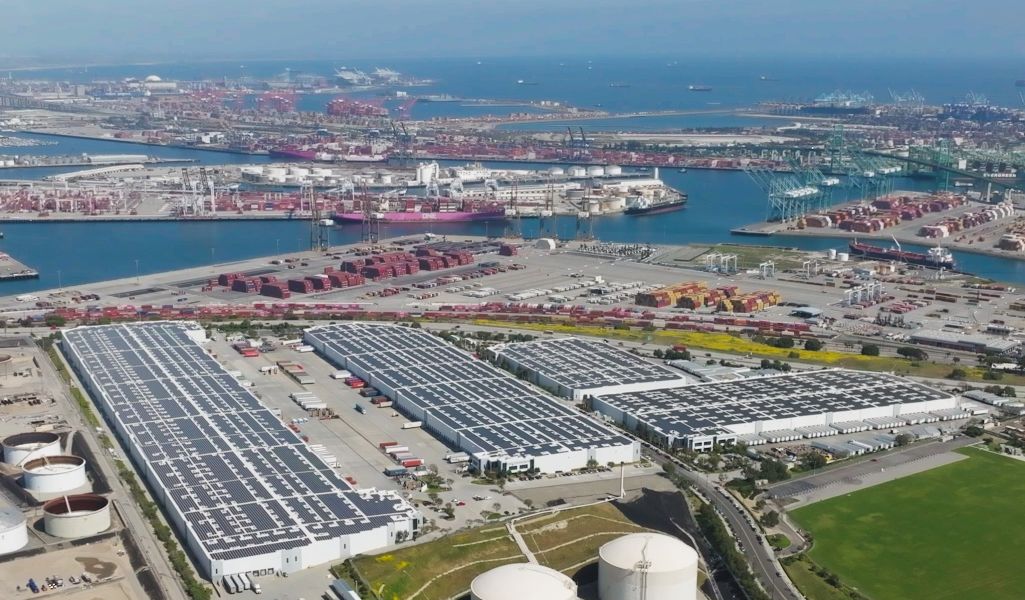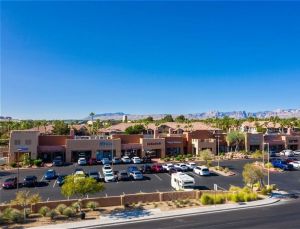Opportunistic Investors Are Waiting to Deploy $100B+ of Dry Powder
Most fund managers have been cautious but are getting ready to make deals.

Douglas Weill, Founder & Co-Managing Partner, Hodes Weill & Associates. Image courtesy of Hodes Weill & Associates
As transaction volumes for 2023 remain low—down 70 percent year-over-year in the first quarter and 50 percent in the second quarter, according to Green Street—and interest rates remain high, many commercial real estate investors, including those with opportunistic funds, are sitting on the sidelines. They’re waiting for the right time and the right deals to spend the money they have built up in funds following the pandemic.
Douglas Weill, founder & co-managing partner of Hodes Weill & Associates, a leading global capital advisory firm that focuses on real estate, said closed-end fund managers are cautious to deploy money and sitting on an estimated $300 billion of dry powder while they wait for a reset.
As of June, closed-end funds with value-add strategies had about $120 billion in dry powder and closed-end funds pursuing opportunistic investments held about $116 billion in dry powder, according to research firm Prequin.
That’s not surprising to Weill.
“They’re anticipating more distress if not distress dislocation in the market and expecting that the next couple of years are going to be good vintage years for deploying capital,” he said.
READ ALSO: What the New Jobs Report Means for CRE
Weill noted they are hearing the same message from LPs, pension funds and sovereign wealth funds.
“They are expecting the next couple of years to be interesting and good times to deploy capital and they’re moving up the risk curve accordingly. So, they are favoring value-add strategies and opportunistic deals, and are less interested in core and core-plus at this point in the market,” Weill said.
“I do think that there’s certainly capital on the sidelines. They’re just waiting for the right deal,” said Kim Hourihan, CIO at CBRE Investment Management, a leading real assets investment manager.
Jeff Reder, managing director of private real estate and co-portfolio manager at CenterSquare Investment Management, an independent real asset manager, agreed. He calls the current real estate and investment market “definitely one of the most challenging environments to invest in” over the past 20 years because of the rising interest rates and recession fears.
READ ALSO: Office Conversions Surge
“There are a lot of investors that are just sitting on the sidelines, given the uncertainty, and just waiting for that visibility again more on the macro level or waiting for the kind of distress that I question if it will truly materialize other than in certain office profiles, such as older vintage urban commodity,” Reder told Commercial Property Executive.

Jeff Reder, Managing Director of Private Real Estate, CenterSquare Investment Management. Image courtesy of CenterSquare Investment Management
Weill and Hourihan noted the fundraising markets have generally been slow, though Prequin’s data shows fundraising picked up in the second quarter, with about 80 percent focused on North American real estate. Prequin stated the $46 billion figure was more than four times higher than the first-quarter fundraising numbers. Numbers were up for global funds as well. Private equity giant Blackstone announced in mid-April that it closed its latest global real estate fund, Blackstone Real Estate Partners X, with $30.4 billion in total capital commitments—the largest real estate or private equity drawdown fund ever raised. Blackstone said its three opportunistic strategy funds (Global, Asia and Europe) had $50 billion in capital commitments.
Noting the firm has made some of its best investments in periods of market volatility and dislocation, Ken Caplan, global co-head of Blackstone Real Estate, stated the firm believed the current market is tailor-made for its strategy.
Other big investors have also been touting what they see as the best investing opportunities since the Great Financial Crisis, including Bruce Flatt, CEO of Brookfield Asset Management. In an August shareholders letter, Flatt said current market conditions would be “fruitful” for the firm to execute its investment strategy to acquire high-quality assets and improve them with its hands-on asset management style.
The Toronto-based global real estate investment and asset management firm has begun fundraising for its fifth opportunistic real estate fund.
Last October, TPG Real Estate closed TPG Real Estate Partners IV, an opportunistic real estate fund that secured more than $6.8 billion in total commitments. During its August second-quarter earnings call, TPG CEO Jon Winkelried noted market dislocation was creating opportunities to acquire high-quality assets and the firm was looking to deploy about $6 billion in dry powder in sectors such as industrial, data centers and life science. Those comments came just days after TPG Real Estate Partners entered into a $1.5 billion joint venture agreement with Digital Realty to acquire an 80 percent stake in three stabilized data centers in Ashburn, Va.
READ ALSO: Discount Grocers Stocking CRE Opportunity
Harrison Street, a leading investment management firm focused on alternative real assets, has about $2 billion in equity commitments so far in its ninth U.S. opportunistic fund, Fund IX, according to Pere. The firm, which had an initial close in June, has a fund target of $3 billion, Pere noted. It would be Harrison Street’s largest fund and is expected to focus on health-care, life science, data centers, single-family rental, senior housing, student housing and self storage assets, Pere reported in September.
Better times ahead?
While fund managers have been cautious and moving slowly to deploy, Weill said some interesting transactions are coming to market.
“They’re starting to see distress play out and lenders are starting to force recaps and repayments and that’s bringing assets to market,” Weill said.
Hourihan agreed, noting that there does seem to be a little more clarity on additional interest rate hikes from the Federal Reserve than last year, when the Fed first began implementing multiple rate increases to tackle rising inflation. Although the Fed paused in September, deciding to keep the target rate at 5.25 percent to 5.50 percent, most economists are expecting perhaps one more interest rate this year, likely another 25 basis points following its November meeting.
“You’re starting to see some deals transact. You’re starting to get some price discovery and the bid-ask (spread) I think is closer so people who are in the market right now are pretty serious about selling versus a year ago,” Hourihan said.

Aerial view of a logistics property CBRE Investment Management recently acquired near the Port of Los Angeles. Image courtesy of CBRE Investment Management
Hourihan said she does expect some of the typical year-end rush of CRE closings to occur in the fourth quarter, though she cautions transaction volume will still be down from previous years.
Transactions jumped in the immediate aftermath of the COVID-19 pandemic, and so many CRE experts say it’s better to compare transaction volume with 2019 rather than 2020 to 2022.
Despite this year’s lower transaction volumes, Hourihan is optimistic.
“There was lots of doom and gloom over the last year, but I feel as if we’re starting to see green shoots from a transaction perspective, from an investor perspective and from a returns perspective. We’re starting to turn the corner,” she said.
Weill also expressed optimism going forward.
“I think there is a backstop of liquidity in the market that should help the market find the bottom,” he told CPE. “So, whether that’s a combination of dry powder in closed-end funds, REITs having some balance sheet to borrow and buy at a point in time and institutions having their portfolios come back into balance at the same time, the sentiment is reasonably good.”
When pensions, insurance companies and sovereigns are active, that also drives a lot of liquidity in the market, Weill added.
‘Selective’ investments
Value-add funds are also cautiously dipping their toes into the market and searching for the right opportunities to fit their investment strategies.
Hourihan said CBRE Strategic Partners U.S. Value 9, one of CBREIM’s main investment vehicles in the U.S., still has dry powder but has been very selective. The vehicle closed in August 2021, with equity commitments of $2.3 billion to the fund and its co-investment vehicles and anticipated purchasing power of $5.6 billion. The value-added strategy targets early-cycle growth opportunities in expansion markets and dislocation in mature markets.
Hourihan described SP9 as a diversified fund that focuses on logistics, data centers, life science, SFR, senior housing and self storage.
She said they’re seeing the most opportunity right now in residential, so it’s heavily skewed to residential but they’re looking at other things as well, including necessity shopping, where she said there have recently been “green shoots.”

The Pueblo at Summerlin is a 36,900-square-foot essential service retail property CenterSquare Investment Management recently acquired in metro Las Vegas and is an example of the essential service retail assets they are seeking for investment. Image courtesy of CenterSquare Investment Management
Reder said CenterSquare closed its fifth value-add fund (CenterSquare Value-Added Fund V, LP) in late 2022, raising approximately $280 million in total capital and co-investments. Reder said they have been “selectively strategic” and sticking to supply and demand fundamentals with fund investments. The goal is to be nimble and seek out risk-adjusted opportunities, he said.
In general, the fund targets multifamily, including the SFR and manufactured housing segments, as well as last-mile industrial and essential service retail sectors. Last month, CenterSquare acquired a 105,785-square-foot essential service retail center in Wilmington, N.C., that was fully occupied with tenants including Dunkin’ Donuts, Jimmy John’s, UPS and Club Pilates.
Also in September, CenterSquare and joint venture partner Ultimate Realty acquired an eight-building, 114,000-square-foot service industrial portfolio in Fort Myers and St. Cloud, Fla. The multi-tenant properties have a total of 56 spaces aimed at service providers like contractors, plumbers, HVAC and woodworkers. It was CenterSquare’s first purchase in the service industrial sub-sector, but they are seeking out other, mostly off-market deals in the niche. Reder said it’s similar to last-mile industrial in that the tenants will pay higher rents to be closer to their customers.
READ ALSO: Where the Smart Money Is Investing in CRE
In April, Texas-based Partners Capital, the investment platform of Partners Real Estate, launched Partners Opportunity Fund V with the goal of raising at least $150 million for investments in major markets across Texas and the Southeast. The fund should have more than $400 million in purchasing power to accumulate a diversified portfolio of assets. During the past seven years, Partners Capital has raised and deployed four investment funds totaling more than $450 million in transaction volume. Its current portfolio comprises more than 1.4 million square feet of assets located throughout Texas’ major markets.
“The name of our game right now as a buyer is just to be patient and disciplined,” said Adam Hawkins, a partner in Partners Real Estate.
While fundraising continues, the firm is seeking value-add acquisitions but Hawkins notes transaction volumes for industrial and retail across Texas have been very slow. For deals that are out there, particularly on the industrial side, Hawkins said sellers want buyers to take negative leverage, but his firm’s strategy is to be conservative with acquisitions while interest rates are rising.
Partners has one retail deal getting ready to close in Fort Worth, Texas, a 134,000-square-foot grocery-anchored retail center with about 15 tenants. Although he didn’t disclose the price, Hawkins said they expect to acquire it at a cap rate of about 6 percent.
“We’re going to be doing a renovation plan on it where rents can be increased by a decent amount and have it make sense for us,” Hawkins said.
“With retail and industrial you have to be careful to find the right opportunities because if the Fed cuts rates, it’s because the economy is suffering and occupancy goes down,” Hawkins said. “We’re being patient and looking at opportunities where we feel like we’re in control of the value. We’re not going to rely on the Fed to cut rates for the deals to make sense.”









You must be logged in to post a comment.